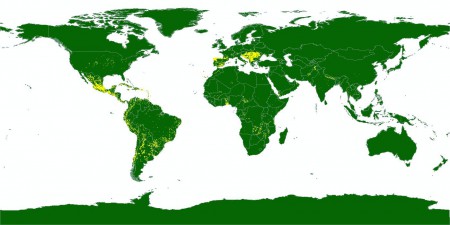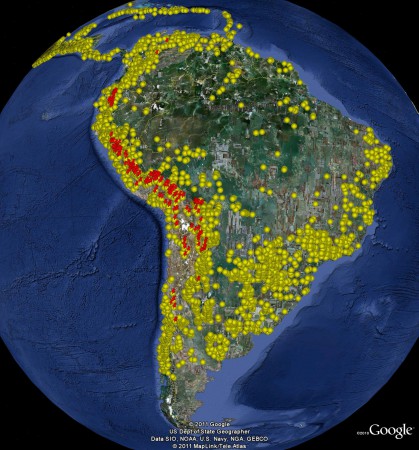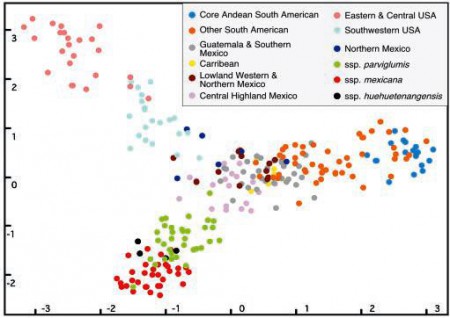The llama dung story got me thinking about high-altitude maize. Maize is a tropical plant and it would have taken quite a bit of effort to get it adapted to high elevations. This is what Genesys knows about maize around the world:
And this is (in red) where maize collected above 3,500 masl has been collected:
Those Andean agriculturalists obviously did a pretty good job of breeding maize to fit the new environment, and in fact still are.
LATER: As Jacob helpfully points out in a comment on this post, a 2002 paper confirmed, using microsatellites, that Andean maize is genetically quite distinct.


